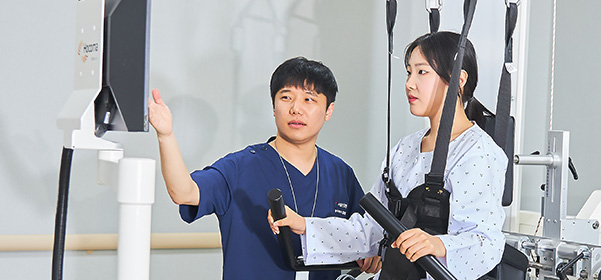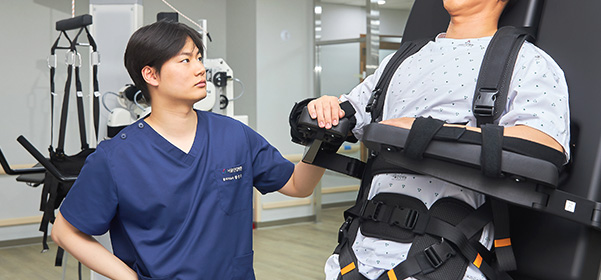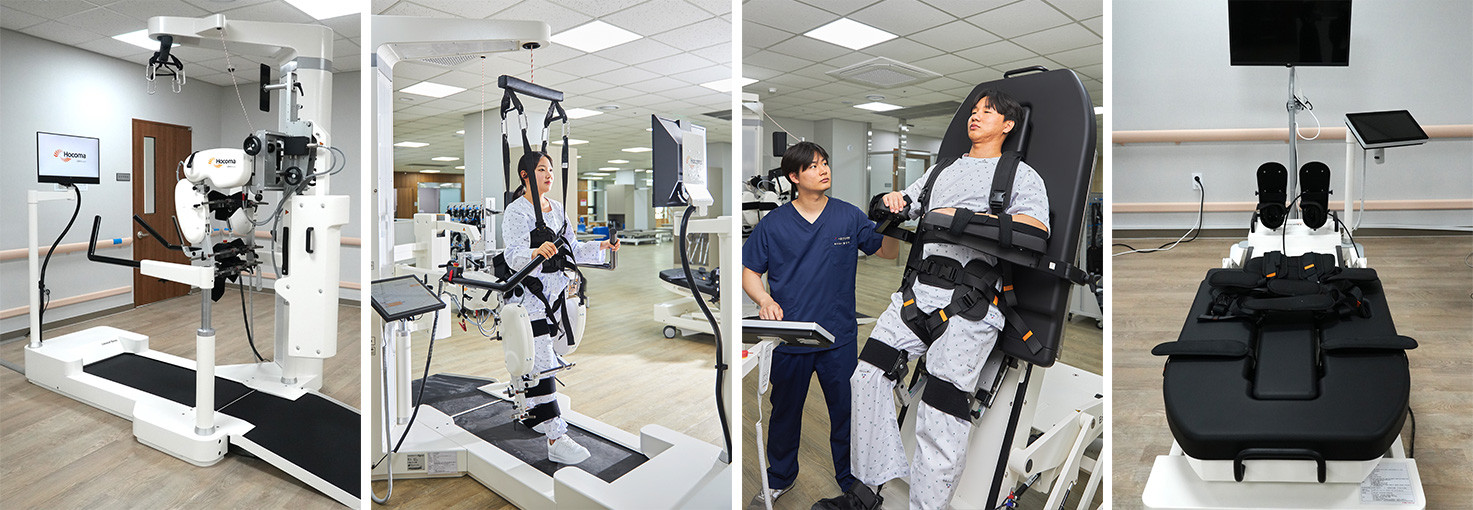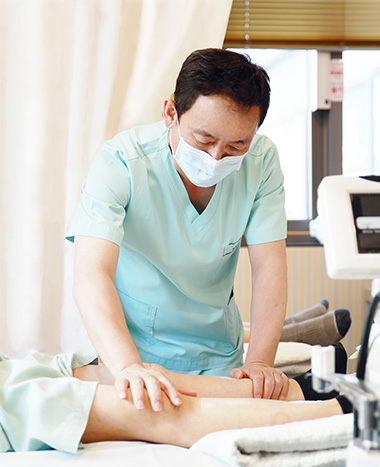
For a Better Tomorrow!
Seoul Ahnkang Hospital is Here with You.

Robotic Rehabilitation
Robotic Rehabilitation
Robotic-assisted gait training provides effective stroke rehabilitation. It can restore a patient’s mobility and quality of life.
The Advanced Rehabilitation Center at Seoul Ahnkang Hospital has introduced a new technology for stroke rehabilitation. The technology uses robotic-assisted gait training with patients with cerebrovascular disease to enhance the effectiveness of their stroke rehabilitation.

The equipment consists of Lokomat and Erigo Pro, a robotic-assisted gait training device designed to restore patients with balance and walking disorders from cerebrovascular disease. The robot provides joint support around the knees and hips that imitates the natural movement of these areas. A variety of game training is also included in the stroke rehabilitation program. The training will allow them to notice the progress they are making during the training and encourage them to continue with the stroke rehabilitation program.

The stroke rehabilitation programs are designed by specialists and customized for each patient to suit their needs. The programs are adjusted to fit the patient’s clinical condition during the training, leading to satisfying treatment results and helping them return to everyday life as soon as possible.


Magnetic Therapy
Repetitive Transcranial Magnetic Stimulation (rTMS) is a safe and non-invasive treatment that uses magnetic pulses to stimulate and regulate nerve cells in areas of the brain related to various psychiatric disorders, particularly depression, obsessive-compulsive disorder, migraines, and smoking cessation.

Recently, rTMS has been used not only to treat chronic pain, insomnia, and
dementia but also to treat motor disorders and cognitive disorders caused by
brain diseases.












